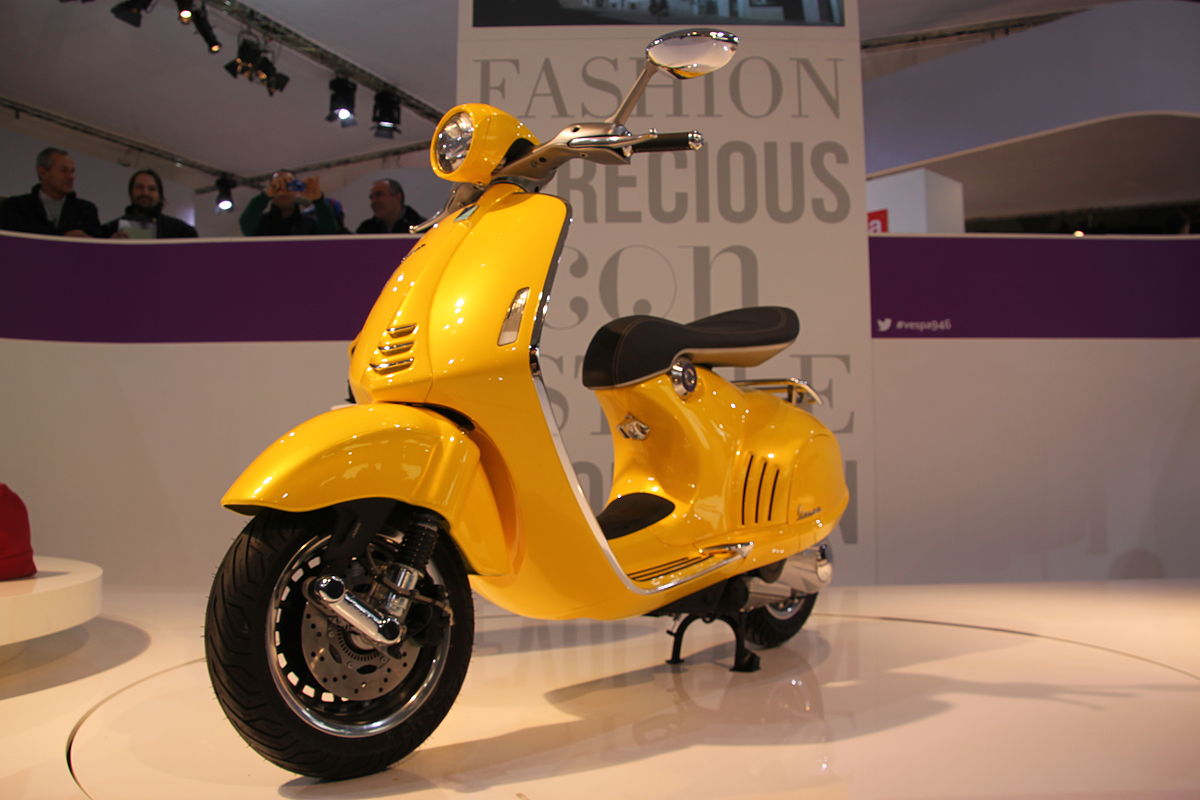A Classic Italian Design – Part 1 Posted by Geoff on Jan 15, 2019 in Culture
Did you know that in 1948 an Italian wasp gave birth to a bee?
At that time, Italy was still struggling to recover from the devastation caused by World War 2. Amongst the many problems that had to be dealt with was a sever shortage of mezzi di trasporto (means of transport), with many people unable to afford what was available.
But Italian ingenuity, enterprise and design flair came to the rescue!
The story begins with the Piaggio company. Founded in 1884, Piaggio initially specialised in arredamento navale (ship fittings) and carrozze ferroviarie (railway carriages). Then came La Grande Guerra (The Great War/WW1), and in 1917 Piaggio began to focus on the production of materiale bellico (war material), constructing motoscafi (motorboats) and antisommergibili MAS (torpedo boats), but above all aeroplani (aeroplanes) and idrovolanti (seaplanes).
Between the first and second world wars, Piaggio continued its aeronautical work, and it was during this period that the talented designer and engineer Corradino D’Ascanio came to work for the company. Perhaps you’ve never heard of D’Ascanio, but I bet you’re familiar with at least one or two of his designs. Amongst his many accomplishments, D’Ascanio produced one of the first fully manoeuvrable helicopters, the D’AT3. But he is perhaps best known for his famous Vespa (Wasp) motor scooter.
World War 2 left many of the Piaggio facilities in ruins, and in 1945 the company began rebuilding their important plant at Pontedera in Tuscany. It was here that D’Ascanio’s Vespa was born. Patented in 1946, the Vespa was an instant hit and is now recognised as one of the classic icons of Italian design.
But there was still a sever shortage of practical, affordable transport capable of moving materials and goods around. So D’Ascanio began working on something bigger … well, just a little bit bigger. D’Ascanio explained:
“Si trattava di colmare una lacuna nei mezzi di locomozione utilitaria del dopoguerra, portando sul mercato un motofurgone di piccola cilindrata, di limitato consumo e di modesto prezzo di acquisto e di manutenzione, facile alla guida, manovrabile nel più intenso traffico cittadino.”
“It was about filling the gap in utilitarian motor transport after the war, bringing to the market a motorized truck which had a small engine with low fuel consumption, was cheap to acquire and maintain, easy to drive, manoeuvrable in the most intense town traffic.”
Hence the Wasp gave birth to the Bee!
Coming soon: A Classic Italian Design – Part 2
Build vocabulary, practice pronunciation, and more with Transparent Language Online. Available anytime, anywhere, on any device.







Comments:
D Heitman:
Molto interessante! Amo l’ape. Grazie
Rosalind:
Arriving in Corsica in the 60s I daydreamed of getting myself a bright pink Vespa then I passed my driving test and my father helped me buy a Citroën 2CV, another iconic piece of design.
Geoff:
@Rosalind One of my sisters has a 2CV, she takes it to rallies in the UK and France. I drove it once, the gear shift was strange, I seem to remember that they had a different order.
My favourite car that I owned was a bright red ex Royal Mail Morris Minor van. I fitted it out with a gas burner, stereo and mattress, and in the late 70’s – early 80’s, my girlfriend and I travelled all over England in it. I put the obligatory ‘Nuclear Power No Thanks’ and ‘Peace’ stickers on the rear windows of course!
Gloria W:
Comment is in regard to older Nov post about using, eating local produce and products.
I am fortunate to have a small orto or veggie garden that I tend. More importantly beyond our local farmers markets we have a company called Logical Living that delivers to its customers local organic products: fruits, veggies in season, milk and cheese, yogurt from a local dairy, meats from a black angus “ranch” from our area. There are other products not grown here in PA but given their final prep for the consumer such as coffee beans roasted for us. The wonderful couple continue to make available on a weekly schedule local products that are fresh, seasonal , and many are bio!
Serena:
@Gloria W Glad to hear that you too have access to local fresh produce where you are. Thanks for sharing.
Saluti da Serena e Geoff